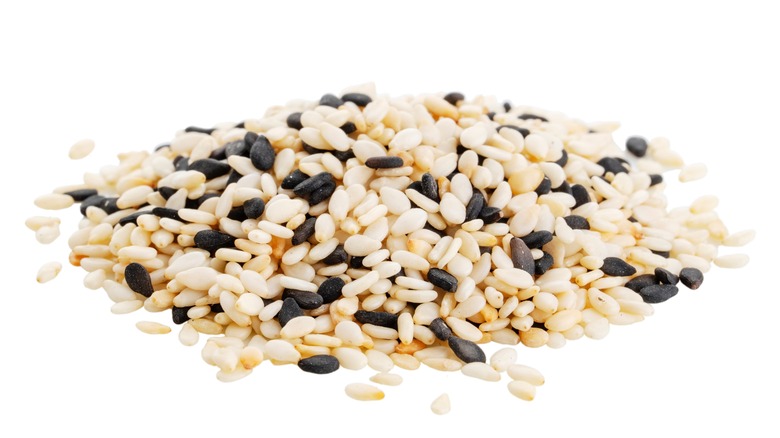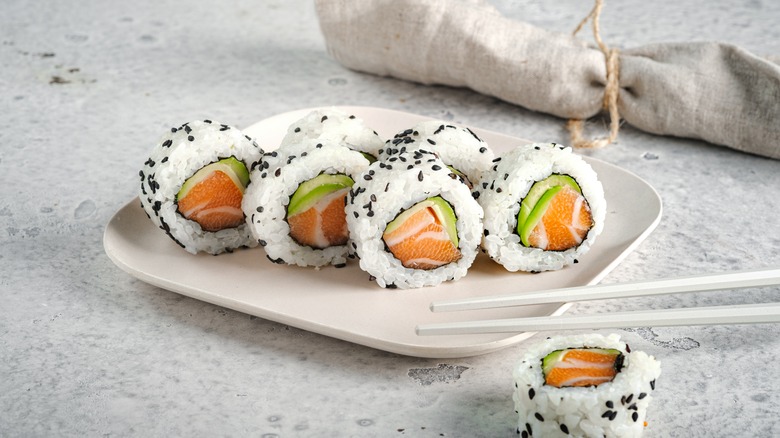Is There A Difference Between Black And White Sesame Seeds?
For as tiny as they are, sesame seeds have the potential to add huge flavor to anything they're added to. As for me, nothing makes a plain, NYC bagel better than a generous coating of sesame seeds. Then again, maybe it's the tap water they're made with? While many immediately picture the white sesame seeds that are sprinkled on things like hamburger buns, there is also a black variety. The two are pretty much interchangeable in the culinary realm, but that doesn't mean each isn't unique in ways beyond their color. In the simplest terms, black sesame seeds still have the hull on them, whereas the hull has been removed from white sesame seeds.
The hull on black sesame seeds make them slightly more crunchy and a touch more bitter than their white counterparts. Without the hull, white sesame seeds actually feel a bit chewy and have a smoother texture when you munch on them, in addition to a slightly sweeter flavor. Toasting white sesame seeds (and black ones, for that matter) will enhance the nuttiness and deepen the color.
Both black and white sesame seeds are nutrient-rich ingredients containing fiber, protein, magnesium, calcium, vitamins B and E, antioxidants, and more. You can sprinkle them on or in virtually anything to get a nutrition boost, from your morning smoothies to desserts.
What are white and black sesame seeds best for?
You can use white sesame seeds wherever you might use black ones, and vice versa. However, black sesame seeds can offer a striking contrast against lighter colored ingredients, like rice, so using them on your sushi rolls will make them look extra appetizing. If you're making your own tahini — which is comprised of ground sesame — using the white seeds will give you the classic-looking, beige-colored result you often see in stores and is perfect for homemade hummus.
Both seeds can be used on breads, crunchy breadsticks, rolls, pasta — like cold sesame peanut noodles – pastries, cookies, granola, crackers, and pizza crust. They make excellent garnishes for sautéed green beans, roasted carrots, and any recipe with sesame oil in it, as they will give the diner an idea of what's in the dish.
Coating fish with sesame seeds before searing it will bring out all the nutty character of sesame seeds — think seared ahi tuna. Using both white and black sesame seeds to coat filets of salmon is a beautiful contrast in color. Sesame seeds are commonly used in Middle Eastern, Asian, and Indian dishes, so look to these for inspiration when finding ways to incorporate sesame seeds into your diet.

